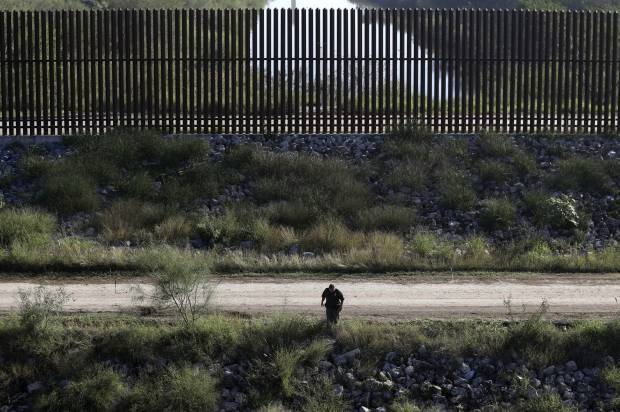In 2002, I began traveling the entire length of the U.S.-Mexico border on both sides. From Pacific Ocean to the Gulf of Mexico, the border measures almost 2,000 miles. The Conversation
What distinguished my journey was that I began traveling well before the idea of fortifying the U.S.-Mexico border entered public consciousness. Inadvertently, I became witness to the wall’s construction and its impact on the lives of border dwellers, which I reported in my book, “Why Walls Won’t Work.”
Shortly after 9/11, as I explain in the the book, the U.S. built 650 miles of walls and fences along of the 700-mile land boundary with Mexico. The 1,200-mile river boundary has few walls, but the Rio Grande/Río Bravo del Norte acts as a natural barrier and is supplemented by other methods of surveillance, including sound and motion detectors.
Nothing like it ever existed in the territory that is now the U.S.-Mexico boundary. It usurps cross-border connections that have origins in prehistoric times. Twin-city communities remain closely connected through work, family, schooling, leisure, commerce and culture. For them, the territory between the two nations is not a matter of sovereignty, difference and separation, but instead is the very foundation of their way of life.
The wall slices through borderland communities disrupting binational trade worth over US$400 billion every year as well as the lives of more than 10 million U.S. and Mexican citizens who reside in the borderland’s six major “twin cities” – San Diego-Tijuana, Calexico-Mexicali, the two Nogales, El Paso-Ciudad Juárez, Laredo-Nuevo Laredo and Brownsville-Matamoros. Adding a new wall, as President Trump proposes, could only worsen the situation without making any measurable impact on border security.
A third nation
During my travels, I started thinking of the space between the two countries as a kind of “third nation.” I confess, I’ve never heard anyone in a border city refer to their turf as a third nation. Locals have many other ways of describing their special connection across the line, like “twin cities” and “ciudades hermanas” (sister cities). Some even call themselves “transborder citizens” living in a “transfrontier metropolis.”
I’ve often been told by people who live binational lives that they forget which side of the border they’re on. But in my experience, the single most common expression of cross-border connection is when people assert that they have more in common with one another than with citizens of their countries.
Traditionally, the word “nation” refers to a group of people who voluntarily identify with others on the basis of shared history, geography, ethnicity, cultural tradition, language and alliances against external threat. The sentiment that unites them is commonly called nationalism. Both terms are imprecise – which is why experts sometimes refer to nations as imagined communities – but there can be no doubt about their appeal, potency and consequence. When a nation acquires the right to govern a territory, then the territory is considered a formal nation-state.
I define a third nation as a community of common interest carved out of two existing nation-states. Transcending geopolitical boundaries, it occupies an in-between space and fosters an identity that is distinct from each country. The alliance is not solely based on material connections such as trade, but also represents a kind of “mental map,” or cognitive awareness, shared by citizens.
I consider the U.S.-Mexico border to be a third nation, which has evolved out of several forms in the past. Historically, these include the 12th- and 13th-century Chichimeca region, which was located between the Anasazi people of the pre-U.S. Southwest and the southern Aztec heartland of Mesoamerica. It was also manifested along the northern edges of Nueva España (New Spain) which buffered the volatile indigenous southwestern tribes from the more regulated Spanish colonial heartland around Mexico City.
Today, the Tohono O’Odham Indian Nation is bisected by the U.S.-Mexico boundary between Arizona and Sonora, Mexico. It possesses an enduring sense of identity, autonomous tribal institutions and laws, and formal territorial organizations that straddle the boundary line.





